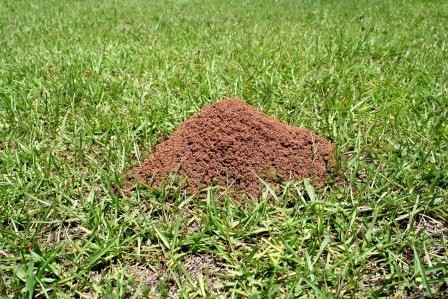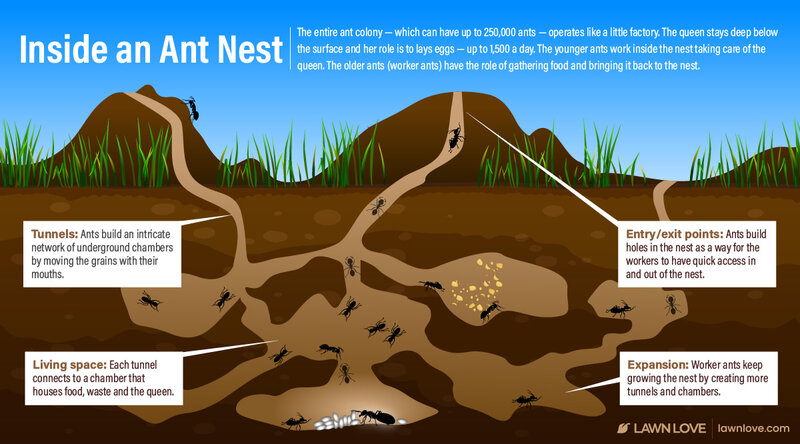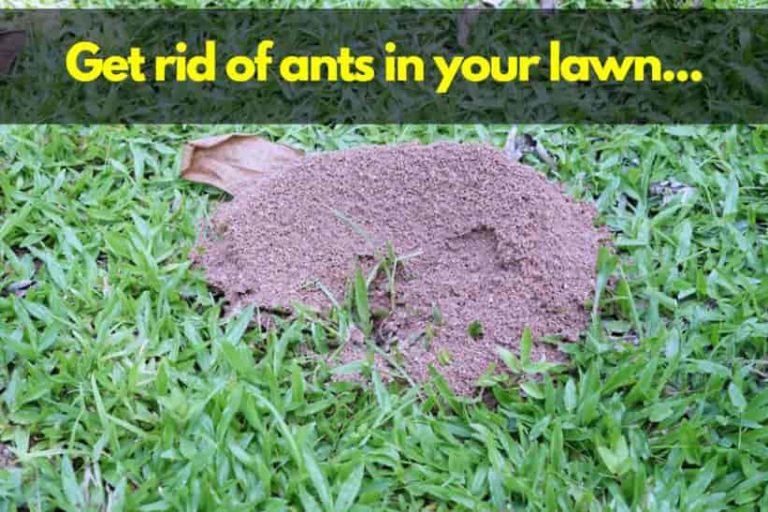The Frustration of Ant Hills in Your Lawn
Ant hills are a common nuisance in lawns, causing frustration for homeowners who take pride in their outdoor spaces. These unsightly mounds can appear suddenly, ruining the aesthetic appeal of a well-manicured lawn. Not only do ant hills detract from the beauty of your lawn, but they can also cause damage to the grass and soil. If left unchecked, ant hills can lead to costly repairs and maintenance. Learning how to get rid of ant hills in your lawn is essential to restoring your outdoor space to its former glory. By understanding the reasons behind ant hills and the methods to eliminate them, you can enjoy a lush, ant-free lawn.
Understanding the Ants: Why They Build Hills in Your Lawn
Ants are highly organized creatures that thrive in colonies, and their social structure is the primary reason behind ant hills in lawns. Ants are attracted to lawns because of the abundance of food sources, such as sweet substances, proteins, and oils. They also prefer lawns with moist soil and adequate sunlight, which provides them with the ideal conditions to build their underground nests. Ants build hills in lawns as a way to protect their colonies from predators and harsh weather conditions. The hills also serve as a means of communication, allowing ants to navigate and coordinate their activities. By understanding the reasons behind ant hills, homeowners can develop effective strategies to eliminate them and prevent future infestations. Learning how to get rid of ant hills in your lawn requires a comprehensive approach that takes into account the ants’ social structure, food sources, and nesting habits.
How to Identify the Type of Ants in Your Lawn
Identifying the type of ants infesting your lawn is crucial in developing an effective strategy to get rid of ant hills. There are several species of ants that can infest lawns, each with distinct characteristics and habits. The most common species found in lawns include little black ants, odorous house ants, and pavement ants. To identify the type of ants in your lawn, look for characteristics such as body color, size, and shape. For example, little black ants are small, dark-colored ants that are typically found in large colonies. Odorous house ants, on the other hand, are brown or black ants that emit a rotten coconut-like smell when crushed. Pavement ants are larger, dark-colored ants that are often found near cracks and crevices in sidewalks and driveways. By correctly identifying the type of ants in your lawn, you can develop a targeted approach to eliminate them and prevent future infestations. Learning how to get rid of ant hills in your lawn requires a thorough understanding of the ants’ behavior, habits, and characteristics.
Natural Methods to Get Rid of Ant Hills in Your Lawn
For homeowners who prefer a more environmentally friendly approach, there are several natural methods to eliminate ant hills in lawns. One effective method is to use boiling water to kill ants and destroy their underground tunnels. Simply pour boiling water directly into the ant hill, making sure to saturate the surrounding soil. Another natural method is to use vinegar, which can be sprayed directly onto the ant hill. The acidity of the vinegar will help to break down the ant’s exoskeleton, ultimately killing them. Diatomaceous earth, a natural, non-toxic substance, can also be used to get rid of ant hills. This powder works by dehydrating the ants, causing them to die. To use diatomaceous earth, simply sprinkle it around the ant hill and water it into the soil. These natural methods can be an effective way to get rid of ant hills in lawns without using harsh chemicals. By incorporating these methods into your lawn care routine, you can learn how to get rid of ant hills in your lawn and maintain a healthy, ant-free lawn.
Chemical Control: Using Insecticides to Kill Ants
For homeowners who prefer a more immediate solution, chemical control methods can be an effective way to get rid of ant hills in lawns. Insecticides can be used to kill ants and eliminate ant hills. There are several types of insecticides available, including pyrethrin-based insecticides, permethrin-based insecticides, and bait insecticides. Pyrethrin-based insecticides work by attacking the ant’s nervous system, while permethrin-based insecticides work by repelling ants. Bait insecticides, on the other hand, contain a slow-acting poison that allows the ants to return to their colony and kill the queen, ultimately eliminating the colony. When using insecticides, it’s essential to follow the product’s instructions and take necessary safety precautions to avoid exposure. It’s also important to note that insecticides may not completely eliminate the ant problem, as new ants can re-infest the area. Therefore, it’s crucial to combine chemical control methods with natural methods and lawn care practices to effectively get rid of ant hills in lawns and prevent future infestations. By understanding how to get rid of ant hills in your lawn using chemical control methods, you can take a comprehensive approach to lawn ant control.
How to Prevent Ant Hills from Forming in the Future
To prevent ant hills from forming in the future, it’s essential to adopt a proactive approach to lawn care. One effective method is to maintain a healthy lawn through regular mowing, watering, and fertilizing. A well-manicured lawn with a dense grass cover can make it difficult for ants to build hills. Additionally, modifying the soil structure by adding organic matter such as compost can help to reduce ant activity. Barrier methods, such as applying a physical barrier around plants or using ant repellents, can also be an effective way to prevent ant hills from forming. Furthermore, sealing entry points around the home and removing food sources, such as pet food and sweet substances, can help to discourage ants from infesting the lawn. By incorporating these preventative measures into your lawn care routine, you can reduce the likelihood of ant hills forming in the future and learn how to get rid of ant hills in your lawn for good. By taking a proactive approach to lawn ant control, you can enjoy a beautiful, ant-free lawn all year round.
When to Call a Professional: Dealing with Severe Ant Infestations
While there are many effective methods to get rid of ant hills in lawns, there are times when it’s necessary to call in a pest control professional. If you’re dealing with a severe ant infestation, it may be challenging to eliminate the problem on your own. Signs of a severe infestation include multiple ant hills, large ant colonies, and ants entering the home. In such cases, a pest control professional can provide effective solutions to eliminate the ant problem. They can identify the type of ant, locate the source of the infestation, and apply targeted treatments to eliminate the colony. Additionally, professionals have access to specialized equipment and products that may not be available to homeowners. By calling a professional, you can ensure that the ant problem is fully eliminated and prevent future infestations. Furthermore, professionals can provide guidance on how to get rid of ant hills in lawns and offer preventative measures to keep your lawn ant-free. Don’t hesitate to seek professional help if you’re struggling to control an ant infestation, as it can save you time, money, and frustration in the long run.
Maintenance and Monitoring: Keeping Your Lawn Ant-Free
To ensure that your lawn remains ant-free, it’s essential to maintain a regular maintenance and monitoring schedule. This includes scheduling regular inspections to detect any signs of ant activity, such as new ant hills or trails. By catching ant infestations early, you can take prompt action to eliminate the problem before it becomes severe. Additionally, regular treatments, such as applying natural or chemical controls, can help to prevent ant hills from forming in the future. It’s also crucial to maintain a healthy lawn through proper mowing, watering, and fertilizing, as a well-manicured lawn can make it difficult for ants to build hills. Furthermore, keeping your lawn free of debris, such as leaves and twigs, can help to reduce the attractiveness of your lawn to ants. By incorporating these maintenance and monitoring practices into your lawn care routine, you can enjoy a beautiful, ant-free lawn all year round and learn how to get rid of ant hills in lawns effectively. Remember, prevention is key, and regular maintenance can save you time, money, and frustration in the long run.







